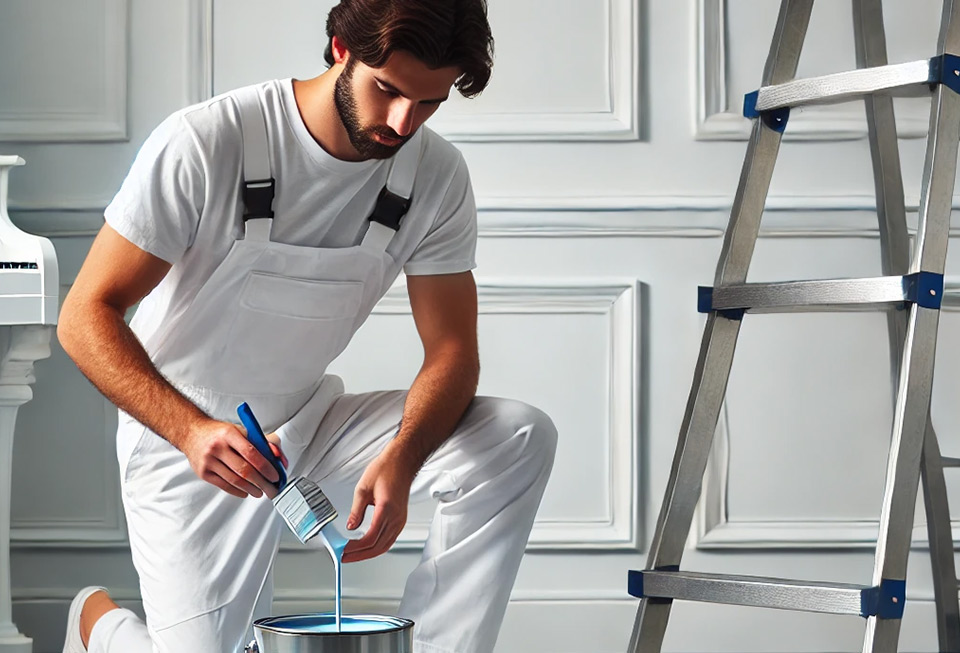
Three mistakes to avoid in your next DIY exterior painting project
April 30, 2021
How to find San Diego painting services that are a cut above the rest
May 17, 2021There is a saying: The first impression is the best.
This saying also applies to the exterior of your home, since it is one of the first things your neighbors see in the morning.
Unfortunately, the exterior of your home is also the most easily affected by environmental elements. Whether it’s scorching summers, freezing winters, or thundering monsoons, your exterior walls have to bear the brunt of these forces!
This fact can make the paint on your exterior walls and trims susceptible to peeling.
As an exterior painting enthusiast, I agree that modern painting solutions can withstand external elements for longer. That said, they are still no match for the climate. Inevitably, you will have to repaint the exterior walls of your home, at least once a decade.
In this post, I’m going to help you explore common problems that lead to exterior paint problems and how you can fix them 🙂
Blisters in the paint
Blistering occurs when air pockets form under the paint film, making small bulges on the surface. Various mistakes made in the process of painting your walls and trims can cause these blisters.
You or your contractor might have applied the paint under direct sunlight or while the surface was still hot. This can trap solvent vapor under the film and cause blisters down the line.
Blistering may also occur when the paint is applied on a damp surface, causing air pockets to appear when the moisture dries.
As much as I hate to be the bearer of bad news, getting rid of blistering requires an extensive repair paint job, as you have to scrape and sand the wall and reapply the paint to make sure the paint is applied uniformly.
Efflorescence
Efflorescence refers to a white, crusty crystal-like substance, which you may have noticed on your exterior walls. It’s caused by salt deposits in your bricks or concrete that dissolve with water and rise to the surface.
Moisture in your walls is the main culprit, here. That said, this may also occur if your walls were not prepared well before the paint was applied.
Eliminating moisture in your walls is the only way to get rid of efflorescence effectively. Plug all the gaps in the wall using either putty or caulk to make a watertight seal, preventing further leakages.
Alligatoring and checkering
Alligatoring and checkering are very similar issues that cause cracks in the paint film but they have one difference: Alligatoring cracks uneven and deep compared to checkering cracks, which form a checkered pattern on the paint film.
Applying a new coat of paint on an uncured base coat is the main reason for alligatoring. Checkering might be a sign of aging paint.
You can fix these problems by stripping off the cracking paint and applying a new coat. In this process, just make sure you scrape and sand the surface properly before the fresh coat of paint is applied.
Peeling
Moisture in the walls is the primary cause of peeling paint. That said, the source of moisture may decide the pattern and severity of the peeling.
If the moisture is caused by internal leaks, the peeling might be less severe. You may notice severe peeling that covers a larger area and exposes bare wood if the source of moisture is external.
If the paint is peeling only in a small section of your wall, sand that area and reapply your paint lightly. Anything more severe may require a complete reapplication.
Sagging
Sagging paint can be easily distinguished by its characteristic droopy appearance and may occur for several reasons. For one, you may have applied the paint on a glossy surface without priming.
Another reason might be the weight of the solution, meaning that it might have been too heavy or too thin when you were applying it.
The good news is that sagging is the easiest to spot and fix while painting because you will be able to see the drooping paint during the process! If you do, use a roller to redistribute the paint on your walls.
Beware of these common paint problems to keep your home’s exterior blemish-free!
The exterior paint problems outlined in this post can ruin the aesthetic of the exterior of your precious home.
If you notice any of these signs on your walls, act swiftly to make a great first impression. Just make sure you’re following all the best practices for a smooth and perfect job 🙂



